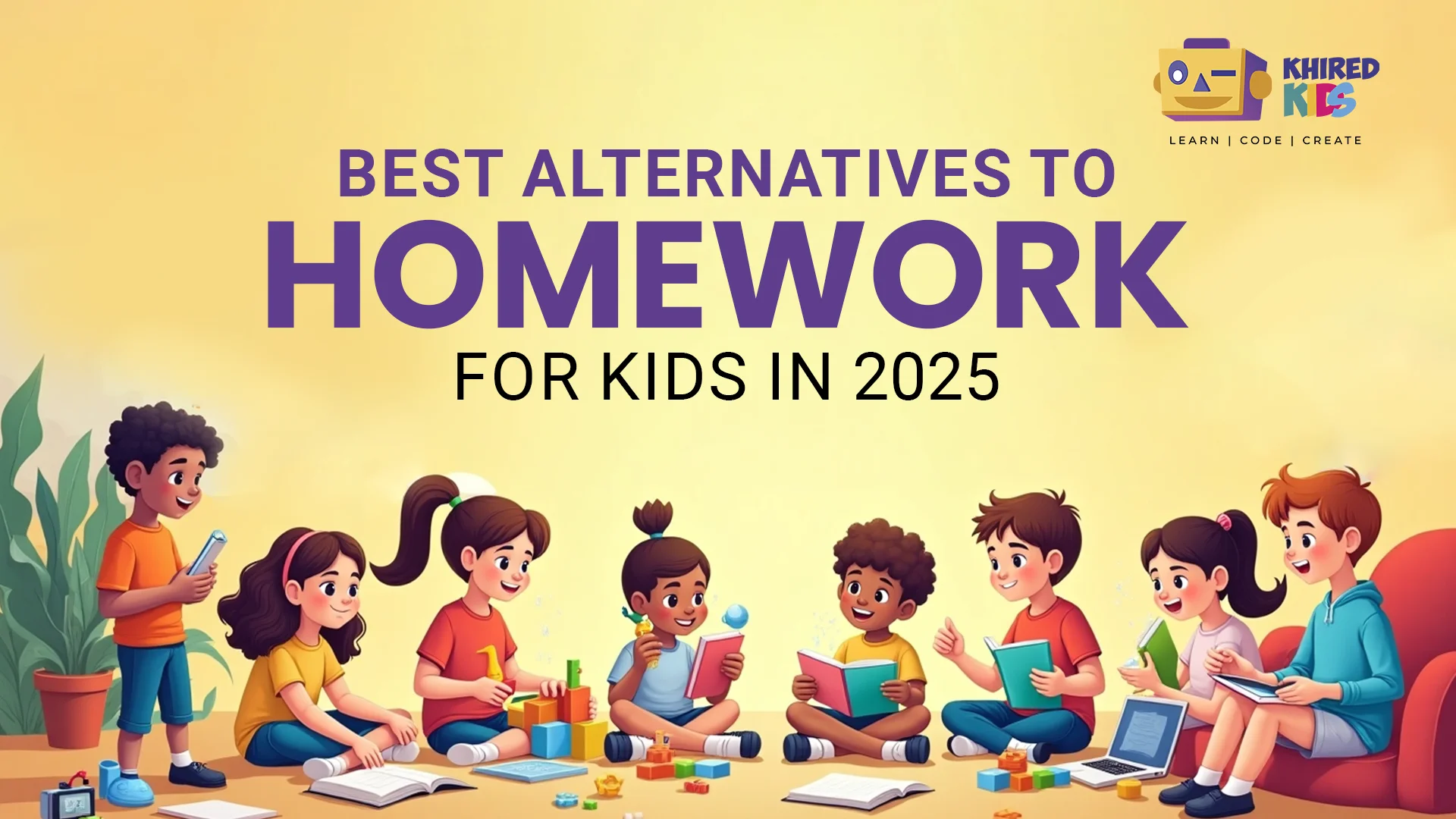“Breaking the Homework Mold”
Homework has been a very long-time traditional form of education. However, with the learning requirement transforming at the present day, parents and teachers desire that something be done differently from boring classroom work—breaking the load of stretched assignments.
Instead of assigning repetitive tasks, what are some creative ways one might think of understanding, encouraging curiosity, and making things fun? Some of these alternatives to traditional homework inspire some creativity and deeper understanding.
1. Project-Based Learning (PBL)
Projects that children take on in PBL allow them to organize their inquiries into real-world problem-solving. Instead of completing worksheets, a student could put together a community garden, design a model of a sustainable city, or write a story about conserving the environment. These assignments promote critical thinking, creativity, and teamwork.
Example: A child who has a love for nature might develop a small herb garden at home. The child can research how to care for the plants, document the process of growth, and present what he learned in a fun way, e.g., a digital presentation or a hand-drawn infographic.
2. Interactive Learning Apps
These contemporary miracle apps revolutionized the world of education and added fire to the thrill of the course. The apps also present creative games under fun sessions for concept consolidation. Other examples include Duolingo for languages or Scratch in learning coding, which was supposed to turn boring knowledge into fun.
Example: Enroll your child in an advanced Scratch coding class where they can develop their own video games. Not only are they learning how to program, but they’re also developing their logic for understanding problem-solving.
3. Family Learning Projects
Learning tasks should include the entire family for meaningful activities. Assembling model airplanes, cooking unfamiliar recipes, and researching family history—all encourage collaborative learning. These activities develop the practical life skills of deeper interpersonal connections.
Example: Have a family cooking night where children will select one international dish, research its origins, and participate in cooking. They could record this via video or photo essay.
4. Outdoor Excursions
Nature provides unlimited opportunities for learning, so instead of letting them sit inside, they can exercise with outings such as parks, scavenger hunts, or watching birds and insects.
Example: Nature walking by identifying plants and animals native to the area. Students can sketch what they see, and then research the species to generate an informational presentation.
5. Creative Arts Assignments
Art lets loose one’s creativity and expression of self. Assignments such as painting, sculpting, or making a digital design can help kids express their understanding through creativity, encouraging abstract thought and emotional expression.
Example: Have kids create a comic strip in which they explain a particular historical event. This way, they can internalize the information playfully and engagingly, which improves understanding and retention.
6. Reading and Reflective Journaling
Children must be encouraged to read and reflect on their thoughts instead of doing worksheets. After reading a book or article, children may write down their impressions, summarize key ideas, or even come up with other endings.
Example: After reading a space exploration story, students might do a journal entry from the perspective of an astronaut on a new planet and describe the challenges and discoveries they have faced.
7. Science Experiments
Experiments offer a good avenue for children’s grasp of scientific concepts. Simple and safe experiments done at home allow curiosity and analytical thinking to boost.
Example: Have kids make a volcano at home and learn about chemical reactions. They can record their process, explain the science behind it, and share their work with the family or peers.
8. Community Service Projects
Giving back to the community teaches empathy and imparts a sense of responsibility. Children can join local clean-ups, or charity drives or organize awareness campaigns.
Example: Encourage kids to run a mini-recycling drive in their neighbourhood. They can create posters, research recycling facts, and do presentations within their community.
9. Digital Storytelling
Digital tools have made storytelling an exciting affair. Children can make video blogs, podcasts, or digital comics to voice their ideas and share knowledge.
Example: Have the kids create a podcast episode interviewing friends or family about their favourite childhood memories, which assists in developing communication and technical skills.
10. Skill-Building Challenges
Challenges that really open new doors for learning hands-on skills such as cooking, budgeting, crafting, or similar, stir the forces of independence and self-sufficiency in the young ones.
Example: Budgeting; the children plan their price for saving and spending and record observations of what they have learned about managing money.
11. Informative Board Games
Board games are not only mere fun and enjoyment, but also board games with strategy, logic, or general education can stimulate thinking skills such as problem-solving.
Example: Scrabble improves vocabulary, while game competitions with Monopoly power teach fundamental aspects of economics and monetary handling.
12. Virtual Cultural Tours
Virtual tours from home showcase the world. Visit a wide variety of museums that have nothing to do with history or culture through online resources to learn about global history and cultures up close.
Example: After a virtual visit to the Louvre, children can write or draw about their favorite exhibit, encouraging deeper engagement with the material.
Why Students Should Not Have Homework?
These alternatives establish a love for learning by linking educational content to real-life scenarios. They push the thinking, creativity, and curious spirit—basic skills for the future. Additionally, the activities accommodate different learning styles so that children remain engaged and motivated.
Final Thoughts
Moving beyond regular homework develops a better understanding and a love for learning. True education happens when kids are allowed to explore, create, and interact with their world; it’s the adventure of learning.
At Khired Kids, we believe in providing young learners with skills that matter. Our advanced Scratch courses teach kids to code while having fun.
So, enroll your child today and have them develop critical thinking, creativity, and problem-solving skills through interactive coding projects for kids!


0 Comments